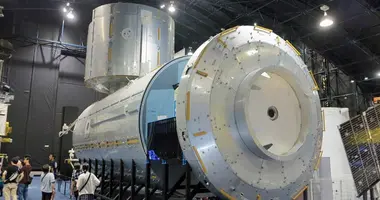Tsuchiura Castle
Japanese Castles: Tsuchiura Castle 土浦城
Tsuchiura Castle in Tsuchiura city in Ibaraki Prefecture, 60km north of Tokyo on the shores of Lake Kasumigaura - Japan's second largest lake after Lake Biwa in Shiga Prefecture - contains the last remaining, original turret gate in the Kanto area.
Tsuchiura Castle is a reconstructed castle and now forms part of Kijo Park (亀城公園), a pleasant green spot just 15 minutes walk from Tsuchiura Station.

Taiko Yagura Mon Gate Tsuchiura Castle, Ibaraki Prefecture, Japan
History of Tsuchiura Castle
Tsuchiura Castle (aka "Turtle Castle"), is a flatland castle and has a long history though its antecedents are far from clear. A fortress is believed to have stood on the site since the Muromachi Period before the Edo Period castle, walls and moats were expanded following the victory of Tokugawa Ieyasu at the Battle of Sekigahara in 1600.
Before then control of Tsuchiura Castle was bestowed on the Tsuchiura clan following the defeat of the Hojo clan at Odawara Castle in 1590 by the forces of Hideyoshi Toyotomi.
Control of Tsuchiura Castle changed hands several times in the 16th and 17th centuries between the Tsuchiura clan and the Matsudaira before the castle and its grounds were donated to Tsuchiura city in 1898. From then on during the Meiji Period various government offices made use of the grounds.
Remaining from the Edo era is the small but impressive Taiko Yagura Mon, built in 1656, which gives access to the heart of Kijo Park. The two reconstructed turrets (yagura): the East Turret and the West Turret, were both rebuilt in the 1990's.
Nowadays Kijo Park is a favorite of dog walkers, mothers with children and people who come to appreciate the cherry blossoms in season.

Yagura Gate, Tsuchiura Castle, Ibaraki Prefecture, Japan

West Gate Tsuchiura Castle, Ibaraki Prefecture, Japan
On the edge of Kijo Park is the modern, concrete Tsuchiura City Museum with exhibits on the history and culture of Tsuchiura as an Edo Period castle town under the rule of the Tsuchiura clan on the well-traveled Mito Kaido route to Mito from Tokyo.
The walk to Kijo Park takes the visitor past a number of historic buildings including four old storehouses or kura and adjacent dwellings which have been converted into cafes, curry houses and small museums. These include the Yaguchi Family Residence and the Nomura storehouses (Tsuchiura Machikado Kura Nomura), the latter the home and business premises of the Nomura family of local merchants.
Togakuji Temple is also nearby and contains a 13th century copper bell designated as an Important Cultural Property and a familiar sound at New Year. Tokoji Temple, virtually next door, is believed to be beneficial to people with eye problems. Beyond the castle is Jinryuji Temple, the family temple of the Tsuchiura clan.
Another historic structure is the surviving gate to the former Ikubunkan Han School, which dates from 1839 and once provided entrance to this once Edo Period center of Confucianist learning.
The Kofuku Inari Shrine was based on Fushimi Inari in Kyoto when this area was developed for shopping in the 1930's.
Tsuchiura Castle Access
Tsuchiura Castle is an approximately 15 minute walk from Tsuchiura Station. Tsuchiura can be reached in about an hour or less on the JR Joban Line from Tokyo Station and Ueno Station. From Tsukuba Station in Tsukuba buses take about 30 minutes and cost 570 yen presently.
The 3-star Bell's Inn is close to both Tsuchiura Station and Tsuchiura Castle.
Tsuchiura Castle
Tsuchiura
Ibaraki Prefecture
Tel: 029 826 1111
Admission is free to the grounds of Tsuchiura Castle; there is an entry fee of 105 yen to the Tsuchiura City Museum.

Moat, Tsuchiura Castle, Ibaraki Prefecture, Japan

Tsuchiura Castle, Ibaraki Prefecture, Japan

Stone steps at Tsuchiura Castle, Ibaraki Prefecture, Japan
Travel Books on Japan
Tsuchiura Castle is a ruined flatland castle within Kijo Park with the oldest surviving gate in the Kanto area of Japan.

















